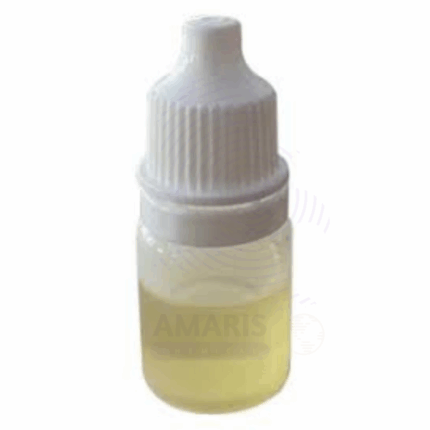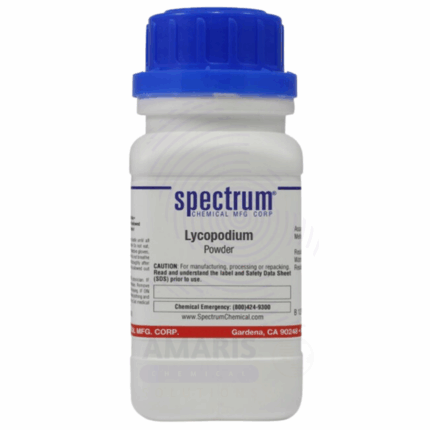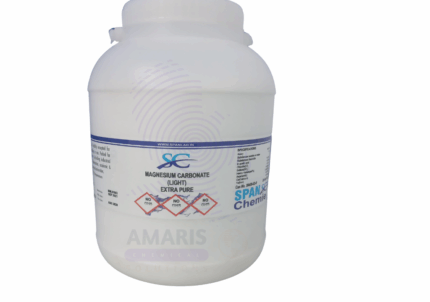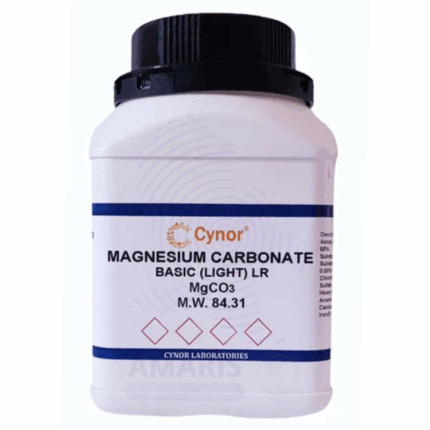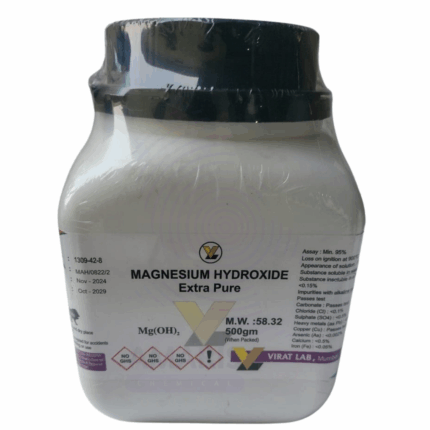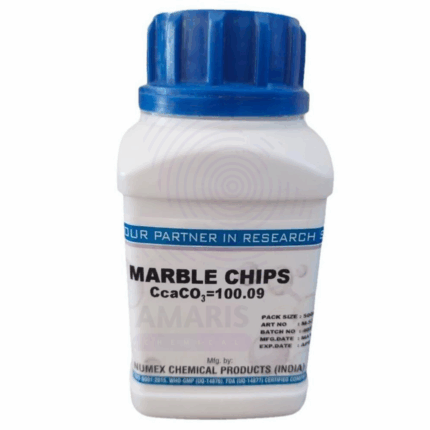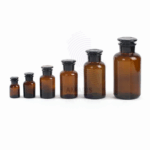
High Temperature Grease Extra Pure
$ 18.15 Original price was: $ 18.15.$ 18.09Current price is: $ 18.09.
High Temperature Grease Extra Pure is a premium-grade lubricant formulated to perform reliably under extreme heat and pressure conditions. It is designed for use in high-temperature environments where conventional greases may break down, such as in bearings, ovens, kilns, and heavy industrial machinery. With excellent thermal stability, water resistance, and oxidation resistance, this grease ensures long-lasting protection against wear, corrosion, and metal-to-metal contact. Its extra pure formulation makes it ideal for laboratory, precision engineering, and specialty manufacturing applications where contamination control and performance are critical.
High Temperature Grease Extra Pure
Primary Uses
- Lubrication of high-temperature equipment joints and seals:
Essential for greasing ground glass joints, stopcocks, valves, and other moving parts in vacuum systems and ovens, where conventional lubricants would degrade. - Thermal stability in vacuum or reaction apparatus:
Maintains its consistency and lubricating properties at elevated temperatures, making it ideal for autoclaves, furnaces, and reflux systems.
Secondary Uses
- Sealing joints in chemical apparatus to prevent gas leaks:
Commonly applied to ensure airtight seals in setups involving inert gas environments or sensitive reactions. - Protection of metal surfaces from corrosion or oxidation:
Used to coat exposed metal parts to protect against chemical vapors or moisture during prolonged experiments. - Insulation barrier in electrical setups exposed to heat:
Serves as a non-conductive thermal barrier in high-temperature electronic instruments and lab sensors.
| PACK SIZE |
1 Litre Glass bottle |
|---|
1. Basic Identification Attributes
- Product Name: High Temperature Grease
- Grade: Extra Pure (Laboratory/Technical Grade)
- Type: Typically synthetic or semi-synthetic lubricant thickened with a metal soap (e.g., lithium complex, calcium sulfonate)
- Appearance: Smooth, viscous paste; usually off-white, tan, or red in color
- Odor: Mild hydrocarbon-like or odorless
2. Physical & Chemical Properties
- Dropping Point: >250 °C (varies with formulation)
- Working Temperature Range: -20 °C to +250 °C (can vary higher depending on type)
- NLGI Grade (typical): 2 (semi-solid consistency)
- Base Oil Viscosity: High (commonly synthetic esters or PAO)
- Water Resistance: Excellent (depending on thickener and additives)
- Solubility:
- Insoluble in water
- Slightly soluble in hydrocarbons or solvents
3. Safety & Hazard Attributes
- GHS Classification:
⚠️ Not typically classified as hazardous, but may contain additives that are irritants or toxic at high concentrations - Hazard Statements (if applicable):
- H315: Causes skin irritation (if contact is prolonged)
- H319: Causes eye irritation
- H336: May cause drowsiness or dizziness (from vapors during heating)
- H411: Toxic to aquatic life with long-lasting effects (if zinc- or lead-based additives present)
- PPE Requirements:
- Safety goggles
- Chemical-resistant gloves
- Protective clothing (lab coat)
- Avoid inhaling fumes if heated
- First Aid Measures:
- Skin Contact: Wash with soap and water
- Eye Contact: Rinse thoroughly with water
- Inhalation (heated fumes): Move to fresh air
- Ingestion: Seek medical advice
4. Storage & Handling Attributes
- Storage Conditions:
- Store in a cool, dry, well-ventilated area
- Keep container tightly closed
- Avoid contamination with dirt or water
- Handling Notes:
- Avoid contact with hot surfaces or open flames
- Clean spills promptly—can cause slip hazard
5. Regulatory & Compliance Attributes
- DOT Classification: Non-regulated
- Labeling: General chemical hygiene labeling if used in labs
- Disposal Considerations: Dispose of in accordance with local environmental regulations (often as used oil or lubricant waste)
6. Laboratory Applications
- Primary Uses:
- Lubrication of mechanical equipment operating at elevated temperatures
- Bearings, bushings, and joints in high-friction environments
- Maintenance of high-speed centrifuges and lab equipment
- Secondary Uses:
- Preventing corrosion in metal joints
- Insulating grease in thermal setups
- Benchmarking performance of other lubricants under thermal stress
SAFETY PRECAUTIONS
Personal Protective Equipment (PPE):
- Wear a lab coat, nitrile gloves, and chemical splash goggles.
- Use a face shield if splashing is likely.
- Use in a well-ventilated area or under a fume hood.
Handling:
- Avoid prolonged or repeated contact with skin and eyes.
- Do not inhale vapors or mists.
- Do not eat, drink, or smoke when handling.
- Wash hands thoroughly after use.
Storage:
- Store in a cool, dry, and well-ventilated area.
- Keep the container tightly closed when not in use.
- Keep away from sources of ignition and strong oxidizing agents.
FIRST AID MEASURES
Inhalation:
- Move the person to fresh air immediately.
- Seek medical attention if symptoms like coughing or dizziness occur.
Skin Contact:
- Wash thoroughly with soap and water.
- Remove contaminated clothing.
- If irritation or redness develops, seek medical advice.
Eye Contact:
- Rinse cautiously with water for at least 15 minutes.
- Remove contact lenses if present and easy to do.
- Continue rinsing and get medical attention if irritation persists.
Ingestion:
- Rinse mouth. Do not induce vomiting.
- Seek immediate medical attention.
- Never give anything by mouth to an unconscious person.
FIRE FIGHTING MEASURES
Flammability:
- Grease is combustible at high temperatures.
- Vapors may form flammable mixtures with air if overheated.
Extinguishing Media:
- Use dry chemical, foam, or carbon dioxide (CO₂).
- Do not use a direct water jet—may cause grease to spread.
Hazardous Combustion Products:
- May release smoke, carbon monoxide, and carbon dioxide.
Firefighter Protection:
- Wear full protective gear and a self-contained breathing apparatus (SCBA).
- Cool surrounding containers with water spray to prevent rupture.


 Preservatives(food)
Preservatives(food) Flavor Enhancers
Flavor Enhancers Acidulants
Acidulants Sweeteners
Sweeteners Antioxidants
Antioxidants Colorants(food)
Colorants(food) Nutraceutical Ingredients (food)
Nutraceutical Ingredients (food) Nutrient Supplements
Nutrient Supplements Emulsifiers
Emulsifiers
 Collectors
Collectors Dust Suppressants
Dust Suppressants Explosives and Blasting Agents
Explosives and Blasting Agents Flocculants and Coagulants
Flocculants and Coagulants Frothers
Frothers Leaching Agents
Leaching Agents pH Modifiers
pH Modifiers Precious Metal Extraction Agents
Precious Metal Extraction Agents
 Antioxidants(plastic)
Antioxidants(plastic) Colorants (Pigments, Dyes)
Colorants (Pigments, Dyes) Fillers and Reinforcements
Fillers and Reinforcements Flame Retardants
Flame Retardants Monomers
Monomers Plasticizers
Plasticizers Polymerization Initiators
Polymerization Initiators Stabilizers (UV, Heat)
Stabilizers (UV, Heat)
 Antifoaming Agents
Antifoaming Agents Chelating Agents
Chelating Agents Coagulants and Flocculants
Coagulants and Flocculants Corrosion Inhibitors
Corrosion Inhibitors Disinfectants and Biocides
Disinfectants and Biocides Oxidizing Agents
Oxidizing Agents pH Adjusters
pH Adjusters Scale Inhibitors( water)
Scale Inhibitors( water)
 Antioxidants(cosmetic)
Antioxidants(cosmetic) Emollients
Emollients Fragrances and Essential Oils
Fragrances and Essential Oils Humectants
Humectants Preservatives
Preservatives Surfactants(cosmetic)
Surfactants(cosmetic) Thickeners
Thickeners UV Filters
UV Filters
 Fertilizers
Fertilizers Soil Conditioners
Soil Conditioners Plant Growth Regulators
Plant Growth Regulators Animal Feed Additives
Animal Feed Additives Biostimulants
Biostimulants Pesticides (Herbicides, Insecticides, Fungicides)
Pesticides (Herbicides, Insecticides, Fungicides)
 Active Pharmaceutical Ingredients (APIs)
Active Pharmaceutical Ingredients (APIs) Excipients
Excipients Solvents(pharmaceutical)
Solvents(pharmaceutical) Antibiotics
Antibiotics Antiseptics and Disinfectants
Antiseptics and Disinfectants Vaccine Adjuvants
Vaccine Adjuvants Nutraceutical Ingredients (pharmaceutical)
Nutraceutical Ingredients (pharmaceutical) Analgesics & Antipyretics
Analgesics & Antipyretics
 Analytical Reagents
Analytical Reagents Solvents(lab)
Solvents(lab) Chromatography Chemicals
Chromatography Chemicals Spectroscopy Reagents
Spectroscopy Reagents microbiology-and-cell-culture-reagents
microbiology-and-cell-culture-reagents Molecular Biology Reagents
Molecular Biology Reagents Biochemical Reagents
Biochemical Reagents Inorganic and Organic Standards
Inorganic and Organic Standards Laboratory Safety Chemicals
Laboratory Safety Chemicals Specialty Laboratory Chemicals(Special Laboratory Equipment)
Specialty Laboratory Chemicals(Special Laboratory Equipment)
 Demulsifiers
Demulsifiers Hydraulic Fracturing Fluids
Hydraulic Fracturing Fluids Scale Inhibitors(oil)
Scale Inhibitors(oil) Surfactants(oil)
Surfactants(oil) Drilling Fluids
Drilling Fluids
 Dyes and Pigments
Dyes and Pigments Bleaching Agents
Bleaching Agents Softening Agents
Softening Agents Finishing Agents
Finishing Agents Antistatic Agents
Antistatic Agents
 Admixtures
Admixtures Waterproofing Agents
Waterproofing Agents Sealants and Adhesives
Sealants and Adhesives Curing Compounds
Curing Compounds Concrete Repair Chemicals
Concrete Repair Chemicals Anti-Corrosion Coatings
Anti-Corrosion Coatings
 Surfactants(cleaning)
Surfactants(cleaning) Builders
Builders Enzymes
Enzymes Solvents (Cleaning)
Solvents (Cleaning) Fragrances
Fragrances
 Electronic Chemicals
Electronic Chemicals Catalysts
Catalysts Lubricants
Lubricants Photographic Chemicals
Photographic Chemicals Refrigerants
Refrigerants Automotive chemicals
Automotive chemicals Pyrotechnic Chemicals
Pyrotechnic Chemicals
 Biodegradable Surfactants
Biodegradable Surfactants Bio-based Solvents
Bio-based Solvents Renewable Polymers
Renewable Polymers Carbon Capture Chemicals
Carbon Capture Chemicals Wastewater Treatment Chemicals
Wastewater Treatment Chemicals
 Pigments
Pigments Solvents(paint)
Solvents(paint) Specialty Coatings
Specialty Coatings Binders/Resins
Binders/Resins Additives
Additives Driers
Driers Anti-Corrosion Agents
Anti-Corrosion Agents Functional Coatings
Functional Coatings Application-Specific Coatings
Application-Specific Coatings
 Fresh Herbs
Fresh Herbs Ground Spices
Ground Spices Whole Spices
Whole Spices Spice Blends
Spice Blends Dried Herbs
Dried Herbs
 Leavening Agents
Leavening Agents Dough Conditioners
Dough Conditioners Flour Treatments
Flour Treatments Fat Replacers
Fat Replacers Decoratives
Decoratives Preservatives(baking)
Preservatives(baking)
 Plasticizers & Softeners
Plasticizers & Softeners Reinforcing Agents
Reinforcing Agents Adhesion Promoters
Adhesion Promoters Vulcanizing Agents
Vulcanizing Agents Antidegradants
Antidegradants Blowing Agents
Blowing Agents Fillers & Extenders
Fillers & Extenders Accelerators & Retarders
Accelerators & Retarders


